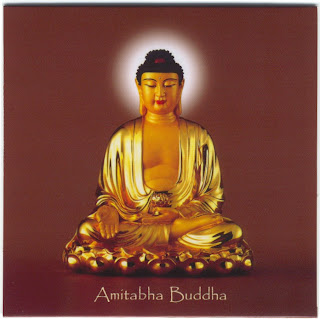Example KOMPREN for RELIGIONS OF THE WORLD
Examiners: Mr. Safrilsyah
Examiners: Mr. Safrilsyah
BUDDHISM
Leader:
Siddharta Gautama.
Siddhartha Gautama was a spiritual teacher from the northeast region of India who is also the founder of Buddhism. He is fundamentally considered by followers of Buddhism as the Supreme Buddha (Supreme Buddha) at the present time. Time of his birth and death are uncertain: most historians of early 20th century life estimates between 563 BC to 483 BC.
- Doctrine / Theology:
Samsara:
Samsara or sangsara in Buddhism is a state of rebirth (rebirth) repeated endlessly. Besides Buddhism, samsara word is also found in Hinduism, Jainism, as well as several other related religions, and refers to the concept of reincarnation or rebirth in Indian philosophical tradition.
Patciccasamuppada:
Paticca samuppada means Law Causes Dependent is one of the most important teachings of Buddhism. This doctrine states the existence of causality in the lives of all creatures, particularly humans. By analyzing and contemplating paticca Samuppada this, Siddhartha Gautama (who at the time was still a recluse) finally became enlightened Buddha.
- Ritual:
Yeongsanjae:Yeongsanjae is a Buddhist ritual ceremony held at the Shrine Bongwon, Seoul, South Korea. Buddhism ceremony in trust is intended to give offerings to the Buddha that he leads men, both living and deceased towards peace and enlightenment. The ceremony was held at the bompae ritual chanting Buddhist sutras, followed by a dance ritual Nabichum, Barachum, Beobgochum and Tajuchum.Beompae ritual chant without the text was written and passed down orally.
Beompae ritual consists of spells and geotchaebi anchabi. Anchabi are four Buddhist musical tones and low noise, while geotchaebi is long spell Nabichum (Butterfly Dance) is a dance performed by the nuns. The dancers are holding a paper peonies in one hand and wearing a headscarf and a long white robe. This dance symbolizes the transformation of a caterpillar into a butterfly.
Leader:
Siddharta Gautama.
Siddhartha Gautama was a spiritual teacher from the northeast region of India who is also the founder of Buddhism. He is fundamentally considered by followers of Buddhism as the Supreme Buddha (Supreme Buddha) at the present time. Time of his birth and death are uncertain: most historians of early 20th century life estimates between 563 BC to 483 BC.
- Doctrine / Theology:
Samsara:
Samsara or sangsara in Buddhism is a state of rebirth (rebirth) repeated endlessly. Besides Buddhism, samsara word is also found in Hinduism, Jainism, as well as several other related religions, and refers to the concept of reincarnation or rebirth in Indian philosophical tradition.
Patciccasamuppada:
Paticca samuppada means Law Causes Dependent is one of the most important teachings of Buddhism. This doctrine states the existence of causality in the lives of all creatures, particularly humans. By analyzing and contemplating paticca Samuppada this, Siddhartha Gautama (who at the time was still a recluse) finally became enlightened Buddha.
- Ritual:
Yeongsanjae:Yeongsanjae is a Buddhist ritual ceremony held at the Shrine Bongwon, Seoul, South Korea. Buddhism ceremony in trust is intended to give offerings to the Buddha that he leads men, both living and deceased towards peace and enlightenment. The ceremony was held at the bompae ritual chanting Buddhist sutras, followed by a dance ritual Nabichum, Barachum, Beobgochum and Tajuchum.Beompae ritual chant without the text was written and passed down orally.
Beompae ritual consists of spells and geotchaebi anchabi. Anchabi are four Buddhist musical tones and low noise, while geotchaebi is long spell Nabichum (Butterfly Dance) is a dance performed by the nuns. The dancers are holding a paper peonies in one hand and wearing a headscarf and a long white robe. This dance symbolizes the transformation of a caterpillar into a butterfly.
Barachum or Cymbal Dance is a dance performed by monks who plays the cymbals in rhythmic movements, followed by spells and play musical instruments. This dance symbolizes the cleansing and purification of the evil forces. Beopgochum or Dance Beat drum dance performed was a monk who played a big drum in the temple. This dance symbolizes enlightenment is reached after leaving all worldly desires and suffering.
- Scripture:
1. Sutta (discourses, dialogue and question and answer), 2. Vinaya (rules for monks), 3. Abdhidahamma (philosophy, metaphysics and psychology Buddhism)
1. Sutta (discourses, dialogue and question and answer), 2. Vinaya (rules for monks), 3. Abdhidahamma (philosophy, metaphysics and psychology Buddhism)
- Accessories, place of worship, Symbol:
Vihara TempleLotus flowers (purity and wisdom)
Dharma Chakra (truth, reality)
Vihara TempleLotus flowers (purity and wisdom)
Dharma Chakra (truth, reality)
Continued to Hinduisme.....

0 comments:
Post a Comment